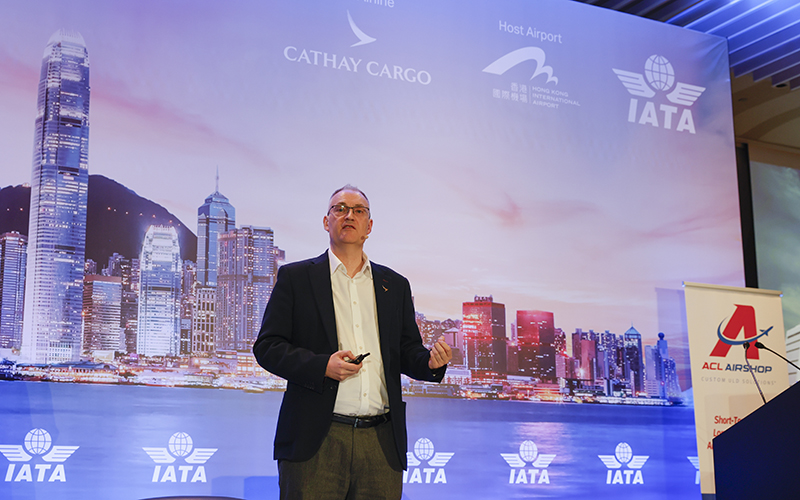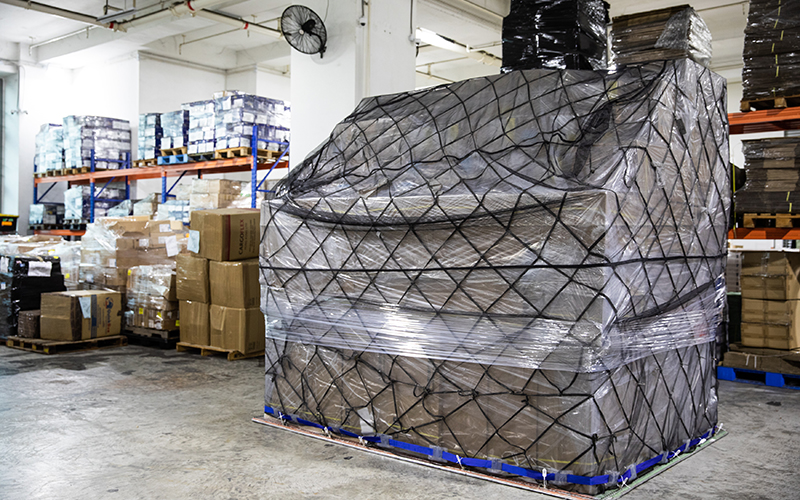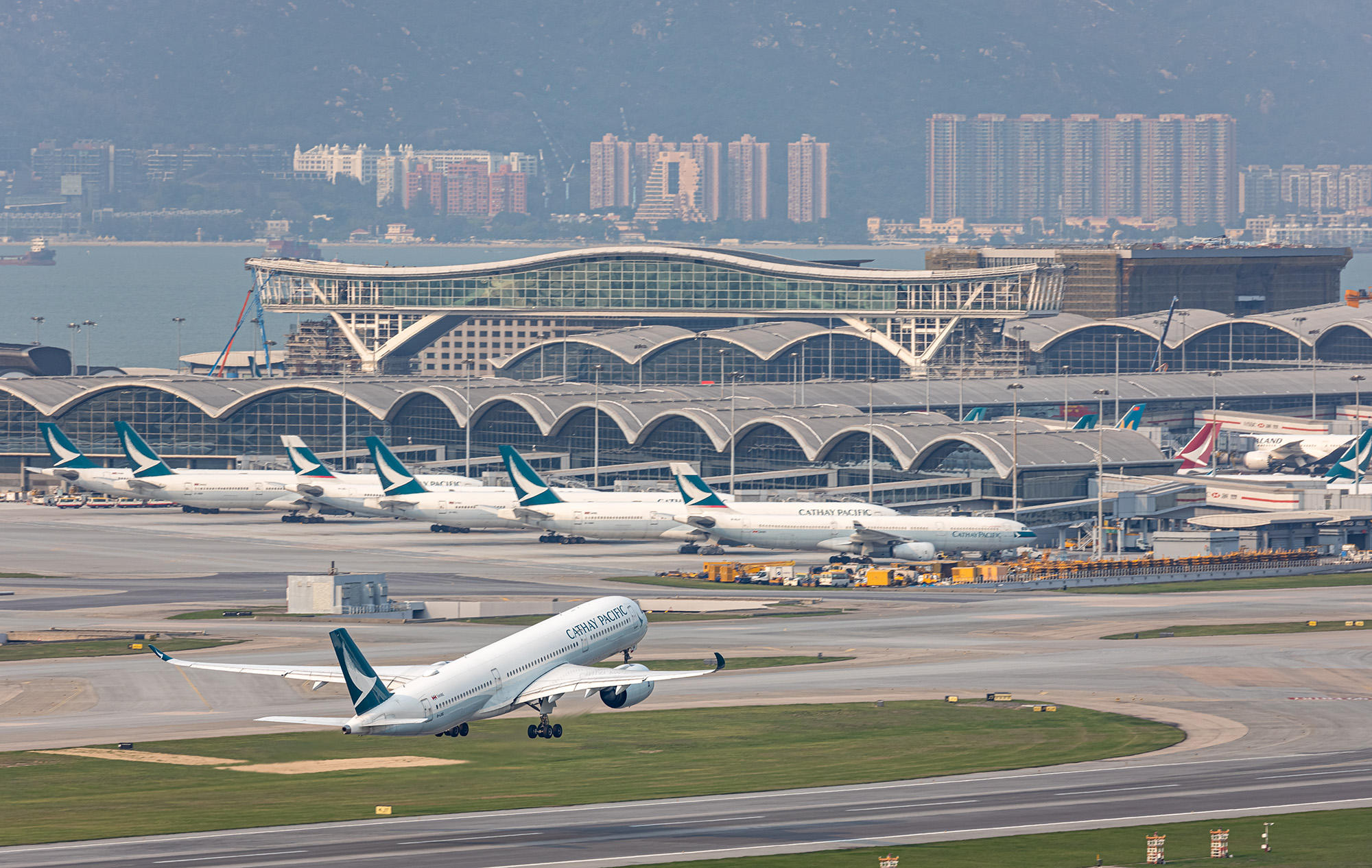Sustainability and air cargo are not natural bedfellows, but in the race to become carbon-neutral by 2050, they are certainly sizing each other up. In the race to carbon neutrality, emissions from aircraft is the big issue, with change coming from more fuel-efficient aircraft, carbon offsetting, and alternatives to conventional jet fuel like Cathay Pacific’s Corporate SAF Programme. However, making a difference to cargo’s ground handling can also pay big dividends for the environment.
Cathay Cargo Terminal handles imports, exports and transhipments for Cathay Cargo, plus other airline customers flying to Hong Kong, and can handle 2.7 million tonnes a year at the world’s busiest air cargo hub. In an operation of that scale, the potential for waste is large – but tackling it is something that Cathay Cargo Terminal has been taking very seriously. It was one of the first company in Hong Kong to apply for IATA’s Environmental Assessment (IEnvA) programme, picking up its accreditation at the World Cargo Symposium in March.

Central to Cathay Cargo Terminal’s strong corporate sustainability culture is a focus on waste and recycling, says Mark Watts, Chief Operating Officer. ‘We actively seek eco-friendly alternatives to divert materials from landfill where possible,’ he notes. ‘Our waste diversion rate more than doubled last year for waste collection and recycling facilities for plastics, wood and food waste. Our vision is to be the world’s best air cargo terminal and, as part of that, it’sour ambition to be a sustainability leader in the cargo terminal industry.’
And when it comes to plastic cargo cover sheets, they are leading the way. The plastic cover sheets that secure shipments on pallets and keep the water off shipments during ramp transfers are a necessary part of the process – but they create a sustainability issue. Of the 560 tonnes of plastic waste generated at the Cathay Cargo Terminal in 2023, more than half was made up of plastic sheets. ‘We processed around 10 million of these sheets last year,’ he says.
The team are watching the development of so-called ‘biodegradable’ plastics with interest, but concerns remain about the level of biodegradability and well as the recyclability of these products. ‘We have so much existing plastic coming into the terminal each day that we have taken the approach that it is better to reuse it and give it a second life by building circularity into our operations,’ says Watts.
Cathay Cargo Terminal introduced circularity into its plastic sheet handling in 2017, and was the first Hong Kong based CTO to do so, but what does that mean in practice? Cargo comes into the terminal from all over the world, and is broken down from pallets. Terminal staff take off the plastic cargo cover sheets, and then take them to balers to be compressed and transferred to the recycling area. ‘We then transfer it to our supplier, which turns it into recycled plastic resin pellets,’ says Watts.

The recycling supplier then mixes the pellets with brand-new plastic to create new, 50 per cent recycled sheets. ‘This is what we mean by circularity: we’re not just sending it off to be recycled and then buying sheets or recycled sheets; it’s our own recycled plastic that comes back to the terminal,’ says Watts. ‘These new sheets are used to build up the outbound cargo, which then flies off around the world.’
While there has been an industry-wide initiative to recycle more of this plastic, many have found it difficult to get past a 30 per cent recycled component, which is the current standard in Hong Kong and across much to the industry. ‘We set the challenge to our team last year to boost the recycled component and we’ve managed to get to 50 per cent, and we’ve introduced that at our Cathay Cargo Terminals from March this year,’ says Watts.
It is a challenge because the plastic coming into the terminals comes in from all over the world, and is of variable quality. ‘You have to be very careful – if you don’t get the mix right, the plastic can be unstable,’ says Watts. ‘So once we got the specifications right, we tested it in the lab, to make sure the tensile strength was right, that it could stretch without tearing, and that it’s waterproof.’

Cathay Cargo contributed by offering real-world operational trials – from heavy monsoon rains in India, to snow and low temperatures in Anchorage, and the warmth and humidity of Asia. ‘These sheets really went through a lot before we were confident that it was going to be the right quality for cargo operations,’ says Watts. ‘Even then, we also do our own quality control at the terminal as well for every single batch.’
Watts is thrilled with the results. ‘To the naked eye, it really looks the same and feels as strong as the previous generation of 30 per cent recycled content that we were using,’ says Watts. ‘We’re very happy with the results and we are recycling 99 per cent of the sheets that come into the terminal, the one per cent accounts for contaminated plastic that we cannot process.’
Watts is also keen to stress that he would be happy to share details of the programme with other terminals. ‘We don’t see sustainability as a competitive issue. It’s in all of our interests,’ he says. ‘We believe that sustainability takes a village. We are very happy to share details of our specifications and suppliers with the industry, so we can work towards making this 50 per cent recycled content the new minimum industry standard.’








